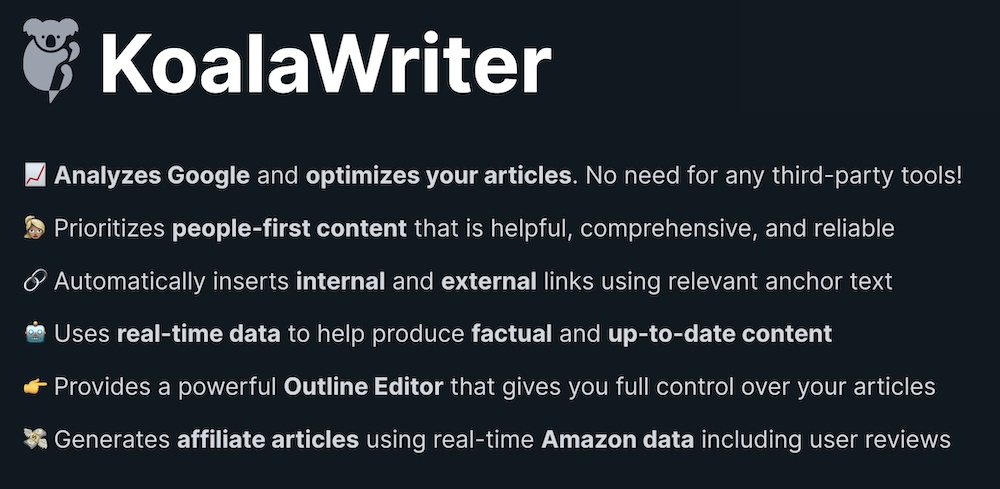A few days ago I published a tweet revealing how I currently have 16 affiliates websites under management and I was planning on doing an info-thread on how to manage such a portfolio.
To my surprise, most of the questions that came through on that initial tweet were about how to pick a niche.
700 words into creating a Twitter thread trying to answer that question, I realised I can’t possibly explain in detail my entire process for picking out niches, so instead;
I decided to create this tell-all guide (where I’m not limited by character length) to give you a better understanding of how I do what I do.
In this thread-turned-guide, I’m going to share with you;
- How to consistently pick profitable niches for affiliate marketing.
- How to gauge the earnings potential of a niche.
- How to find low competition keywords (which you’ll be able to rank for easily)
- How to analyze the competition (so you know what you’re up against & how to out-rank them).
With that out of the way, let me now share with you the exact process I follow to find more niche ideas than I can ever build.
Niche Research: How To Find Your Niche
“Niche research” is one of my favourite hobbies.
Even though it’s a work-related activity, it’s something I do “after work” just to chill out at the end the day.
The hundreds of hours I’ve spent doing niche research has made “niche picking” one of my strongest skill-set in affiliate marketing and it does help me be more confident with the type of niches I go after.
While “experience” is not something I can teach you, I do have an equally-effective method I want to share with you and it’s the same method I follow when I want to dig deep into a niche I’m interested in.
NB: This strategy for finding niches does involve using Ahrefs, which is a paid keyword tool.
If you’re serious about doing affiliate marketing, I highly suggest you take advantage of their 7 days for $7 offer.
Following the method outlined below, 7 days is more than enough time to find all the niches and keyword ideas you will ever need.
Let’s get started…

Step 01: Find Keywords Mega “Review Sites” Are Ranking For
This is not the only way to find good niches, but it’s a damn good way to find niches with massive search volume and very little competition.
Basically, you need to find a few “major” websites that focus on publishing reviews and top-10 style articles.
Some of my favourites are:
- Top 10 Reviews
- Reviews.com
- TheWireCutter.com
- (There are 100s of these type of sites)
These are all mega-successful affiliate websites that publish reviews and “best-product” type articles for a wide variety of niches.
The reason this is important is becuase these websites are very good at finding niches & keywords with “buyer intent”.
Buyer-intent keywords are keywords nobody would search for unless they’re planning on buying today or soon.
When doing affiliate marketing, you obviously want to go after niches that have buyers – more on this later.
Step 02: Go Through The Keywords The Review Site Is Ranking For
Your next step is to see what keywords your chosen review site is ranking for that can be an independent sub-niche in its own right.
To do this, you need to go to ‘Site Explorer” in Ahrefs, and then sort out the results by;
- Volume – “from” 15,000 minimum and
- KD (keyword difficulty) – “to” 5/10/20 maximum.

What is Volume?
Volume is what Ahrefs estimates to be the number of monthly searches that specific keyword gets.
This is not always correct, but it does give you an estimation as to how popular a keyword is.
The reason why I set it to 15,000 minium is I want to make sure that the niche has enough search volume to justify having its own dedicated website.
If I spot a keyword/niche idea that only has (for example) 500 searches per month, that won’t be enough volume to get you the traffic you need to make a decent income with your website.
What is Keyword Difficulty (KD)?
Keyword Difficulty is a metric developed by Ahrefs to measure how difficult it would be to rank for specific keywords.
They measure the KD by seeing the “backlink profile” of the top 10 websites that rank for this keyword.
While yes I have been critical of backlinks in the past, they are still a good measure to gauge the type of rank-authority your would-be competition has in Google.
First, start off with “up to 5” and if you do not find a niche that interests you enough to research it further, switch it to 10 and eventually 20 (but that’s really pushing it).
Once you’ve filtered out the results by KD, you are then left with hundreds of low-competition niches with enough search volume to pique your interest.
Here’s how the above process looks when I research Top10Reviews.com through the Ahrefs site-explorer:
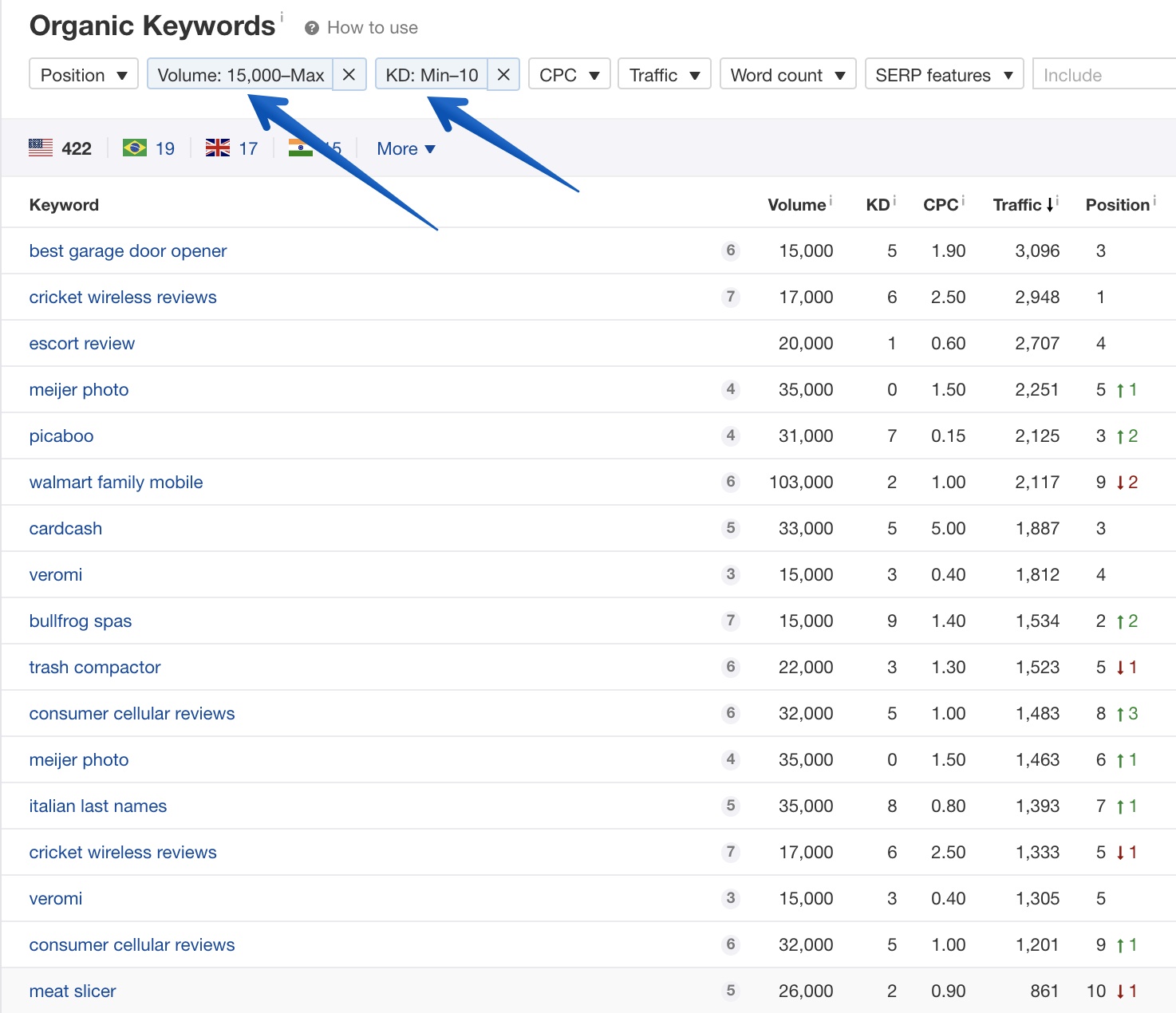
Keep in mind that in this report, you are seeing keywords which the site is ranking for, but those keywords (given they have enough volume) can be entire (sub)-niches.
From the results shown above, I’ve identified at least 3 “potentially” good niches from this website:
- “best garage door opener” – 15,000 searches – 5KD
- “trash compactor” – 22,000 searches – 3KD
- “meat slicer” 26,000 searches – 2KD
Just as a bonus, here’s what comes up when I go through the same process with TheWireCutter.com:
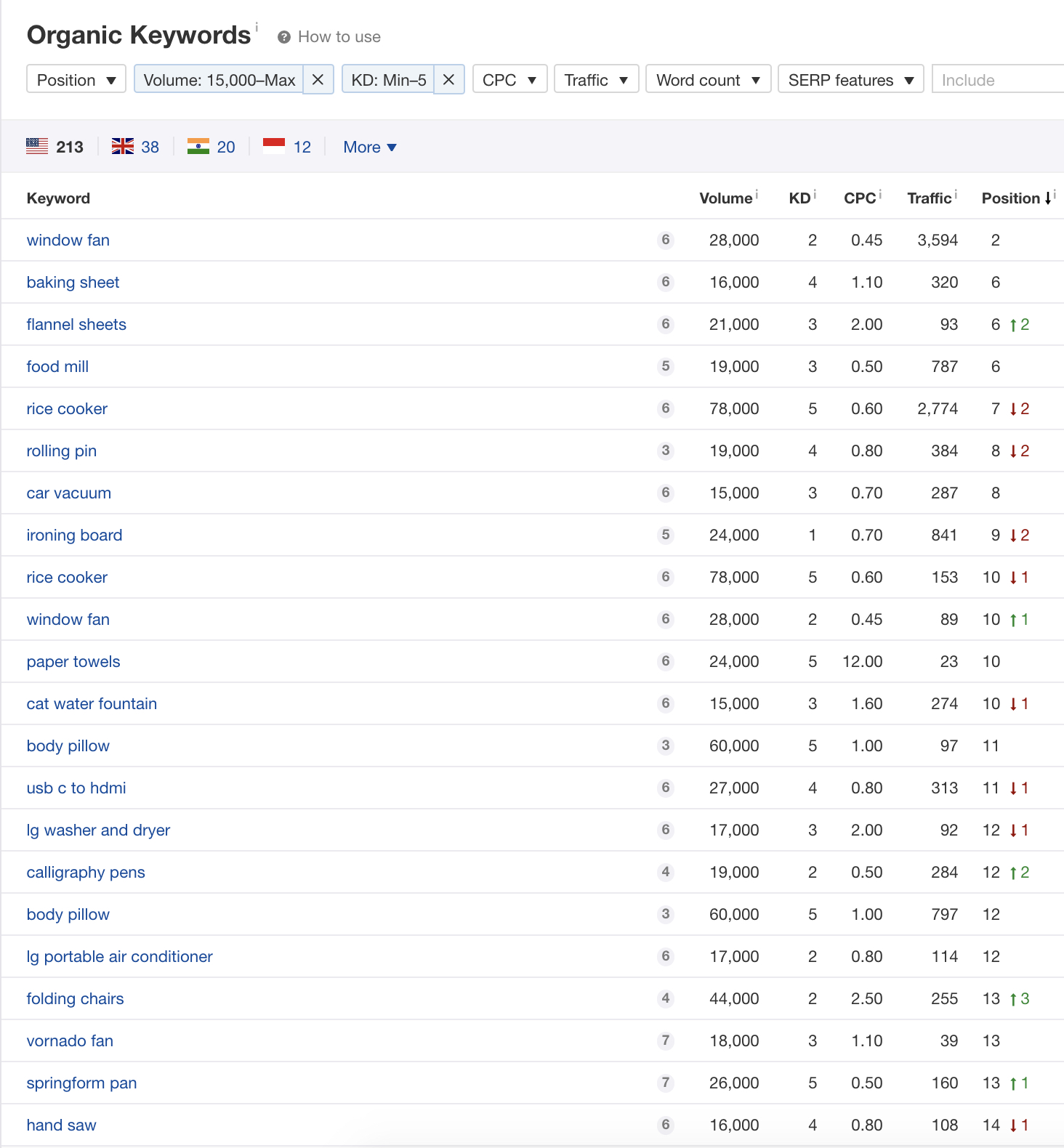
- “rice cookers” – 78,000 searches – 5KD
- “cat water fountains” – 15,000 searches – 4KD
- “car vacuum” – 15,000 searches – 3KD
- “calligraphy pens” – 19,000 searches – 2KD
As you can see, these keywords (think: niches) get thousands of searches per month and they also have a low-enough KD score that makes them very attractive.
Does this mean they’re a good niche to go after?
Actually – no, not yet.
You now need to answer two crucial questions that will determine if your chosen niche is worth targetting. Here’s how you do that.
Step 03: Is This Niche Worth The Effort?
To determine whether a niche site would be worth my time, effort and money, I look at these two metrics:
- Does this niche have “buyer-intent” keywords?
- What would be my commission on these products?
Buyer keywords are pretty self-explanatory (and I already gave you my reasons why they are important when picking a niche).
Is this something people want to buy, or just want to look at?
I doubt people will be looking for “best garage door openers” if they were not looking to buy/replace one soon, so yes – in my opinion – this is a niche with buyers ready to spend money.
Next, let’s see how much these things actually cost;
If you going to be promoting physical products like I’m describing above, your commission would be around 5-10% (sometimes less, sometimes more – but not a lot more) so;
When doing affiliate marketing for physical products, do not promote anything less than $300.
In the past, I would’ve said $100 but after testing things out, it’s much quicker to get to a decent level of income when you stick to the $300+ price range.
Also, since you will be going after a niche with already exiting buyers looking for that last confirmation before they purchase;
It would be just as easy to sell a $500 product as it is a $50 product so don’t shy away from high-ticket items.
So, do “garage door openers” qualify for this price range?
You bet!
On Amazon, they start from $190-ish but most are well over $300 and the highest ones go for $800+.

Given the current Amazon affiliate structure, you can earn about 8% on a $500 garage door, so you’re looking at ~$40 in commissions for each sale.
Does the niche have enough search volume to sell…
- 10 units a month ($400 p/month in commissions)?
- 50 units a month ($2,000 per month in commissions)?
With a 15,000 search volume per month – for one keyword in a niche with plenty of other buyer-intent keywords – I like my chances.
So far, the data is suggesting this niche would be a great money-maker if done right, but;
There are 2 further steps to this method that would all but guarantee this will be a profitable venture. Those are:
- The available related keywords in this niche.
- The quality of the competing pages for those related keywords.
In other words, do I have a chance of out-ranking some of the current websites?
Step 04: Measuring The Competition Of A Niche
Let’s head back to our trusted Ahrefs dashboard and explore what type of keywords would be related to “garage door openers“.
The root keyword for “best garage door openers” is actually “garage door openers” and as expected, this root keyword will be slightly harder to rank for since it has more searches and more websites targetting that broad-er keyword.
Here’s the current data on that main keyword:
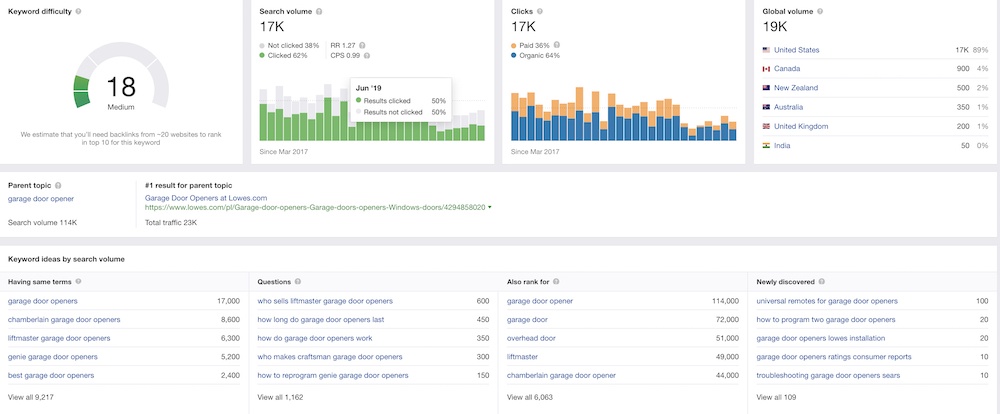
What I like to do next is go to the “Having search terms” and ‘Questions” filters on the left side of the screen.
This will give me a list of keywords that are related to the main root keyword.
Since you will be starting with a brand new website competing with bigger and more established players, it’d be wise to filter out the lowest competition keywords first (and target those keywords with individual blog posts), thus set the KD to a maximum of 10.
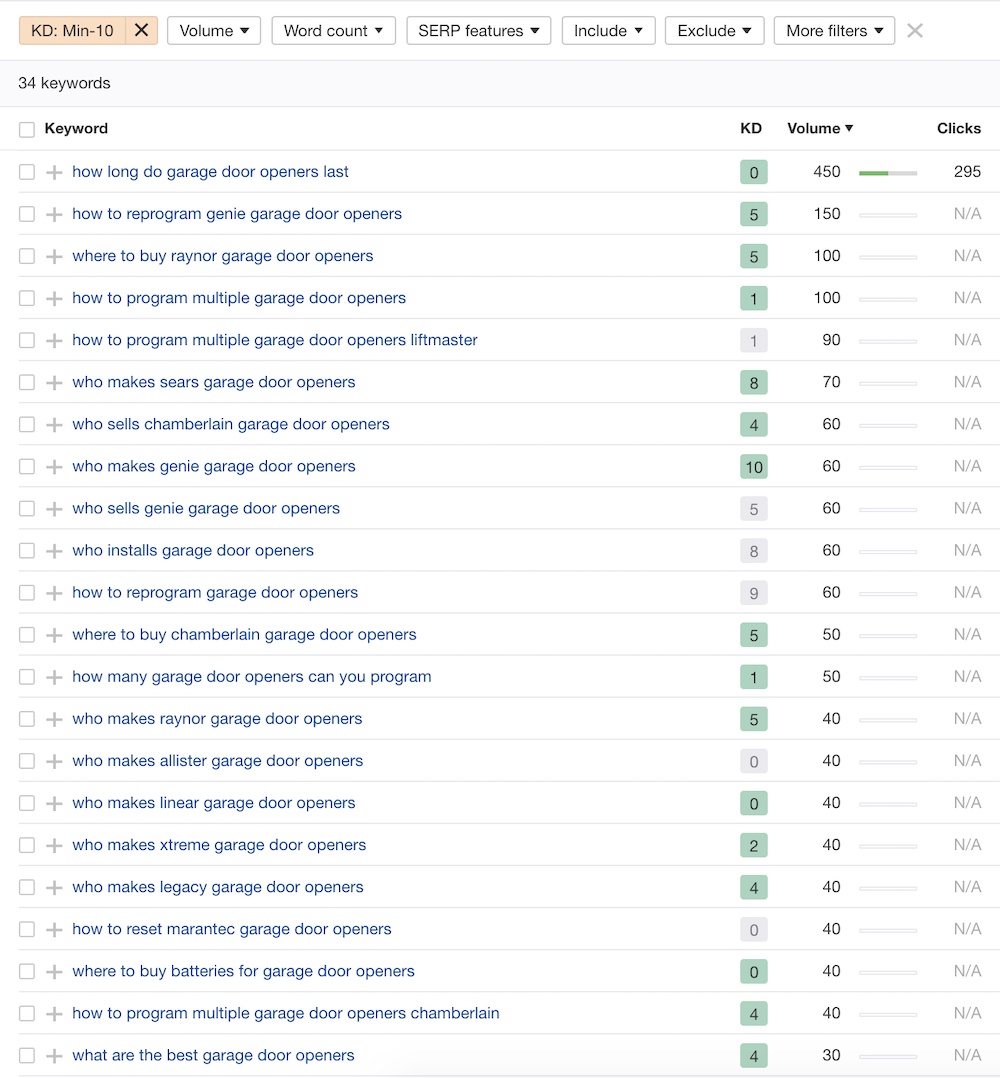
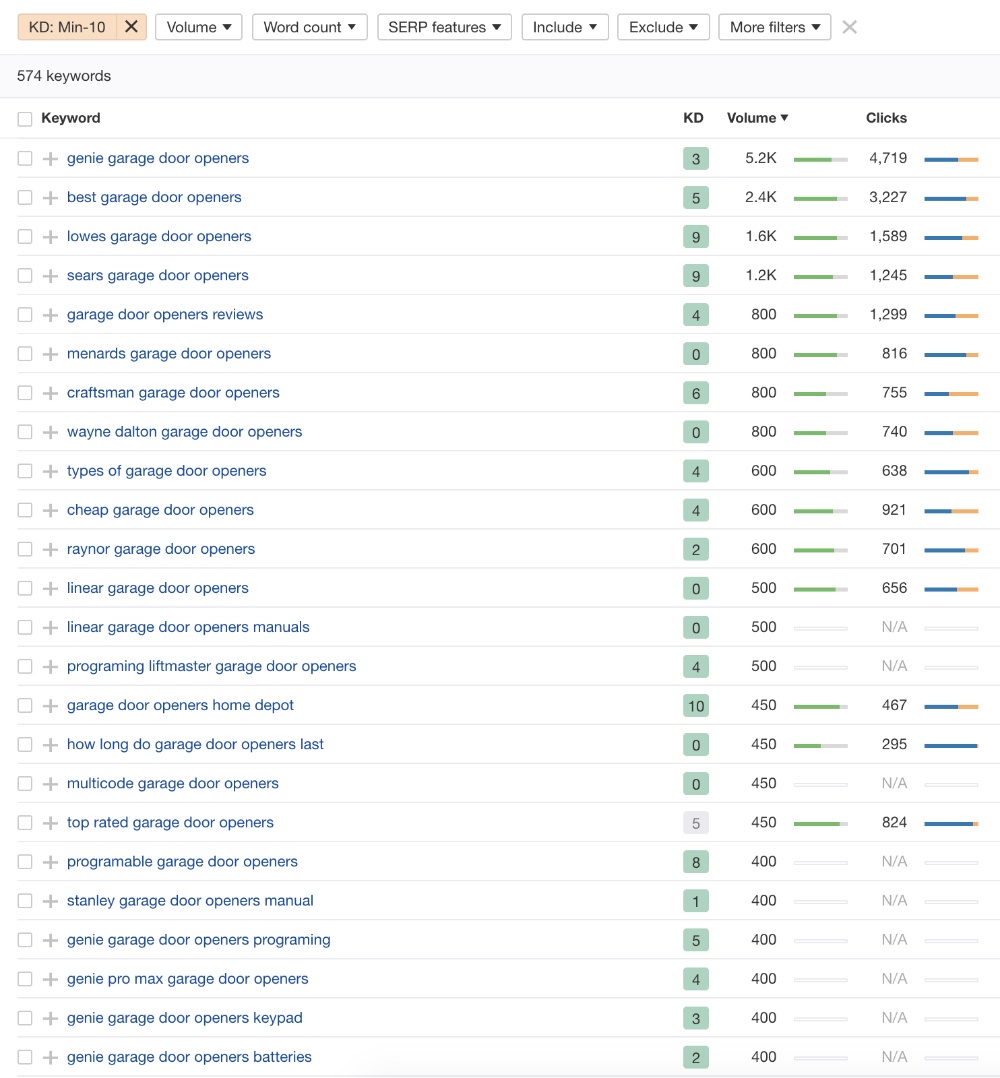
These 10-and-below KD keywords will be easy to rank with some great SEO content, which is also something I will share with you below, but first – let’s see what content we’re up against for these search terms.
For this example, I will use the keyword “how long do garage door openers last” which has an estimated search volume of 450 and 0KD.
You can find the competing pages of that keyword by searching for the term either on Google, or better yet using Ahrefs to see what’s really behind these rankings.
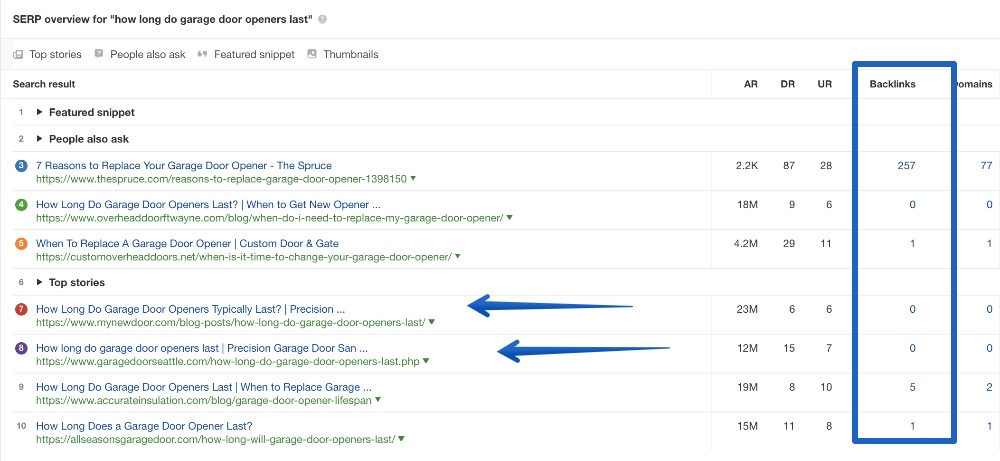
One thing that’s clear is that most pages ranking for this keyword have 0 backlinks pointing to them which is a reassuring sign that you can easily out-rank some of them.
Once I clicked through to some of the pages, I can also see that the content is very low quality.
What do I mean by low quality?
The first site I checked out was GarageDoorSeattle.com (currently ranking in position 8).
It’s a “local website” appearing for international keywords (a major sign there’s room to compete here) and also their content is only 200-ish words.
This means if I can create a better guide/post on how long garage doors last, I am pretty confident in my chances (and my SEO skills) that I can out-rank this website.
MyNewDoor.com is also ranking pretty well and right off the bat, I can see that their content is also not great.
They have a big image pushing the content “below the fold” (not something Google usually likes) and it’s also quite short.
If I was going to go for this niche, I would make a list of all the easy-to-rank-for keywords and continue analyzing the top 10 results to see if I can have a chance at ranking for these keywords.
If I see the competition is lacking with their SEO (and they’re just ranking because there’s no better alternative) I would take that as a sign that if I can create better content, then I’m almost certain to get a top 5 position.
How do you create better content than the competition?
I would look at the first organic search result. Since it’s in the first position, this tells me Google has decided it’s the best result for that search query.
Your job is to figure out why it’s deserving that #1 position:
- What intent is this post addressing?
- How long is the article?
- How does it answer the question?
- How does it satisfy the reader (if at all)?
- Does it use images to illustrate the point?
- Is it lacking in some SEO fundamentals that I can leverage to outrank them?
The question now is;
Can you create something that is better-than-the-best?
If you can, then you know that the possibility of – at least – cracking the top 10 is very much present. Maybe not the first position, but at least you will be on the first page.
Of course, publishing one post is not going to cut it.
Even if you did create a better post, one stand-alone post can not get you the traffic/rankings you’re looking for – which is why you need to have more easy-to-rank for keywords that you will be targetting.
Even though you do have a chance at ranking for your chosen keyword (even as a brand new website), you do need a more holistic SEO approach and you do this by having a variety of content that suggests to Google you’re to be trusted.
How To Kick-Start Your Affiliate Niche Website
If you’ve seen the potential of your niche, you are confident enough that you will be able to out-rank the competition and you are happy with the commissions you will be earning;
It’s time to create your website and start publishing content.
The current content approach I take with every new niche website I launch is the 10/10/10 Content Strategy:
- 10 Question/How-To Posts
- 10 Reviews
- 10 Round-Up Lists
Your first 10 posts should be “informational” posts that answer specific questions people who are looking for that product might have.
Example: “how long do garage door openers last”
The best way to find these how-to “question” keywords would be Ahrefs since you can gauge the volume and competition (how I explained above).
If you’re confident in the niche, you can also use the free AnswerThePublic.com tool that will give you hundreds of question-keywords you can create content for.
Your next 10 posts should be reviews for the top 10 most expensive units filtered by the highest average customer rating (you can find these on Amazon) and publish them on your site, for example:
- LiftMaster Wall Mount Garage Door Review
- Chamberlain Wall Mounted Garage Door Review
These type of keywords probably won’t have enough search volume to be picked up by keyword tools, but rest assured whoever is searching for these keywords – even if it’s just 50 people a month – you know they are BUYERS.
The final 10 posts should be “round up posts” targetting 10 keywords such as:
- 20 Silent Automatic Garage Door Openers
- 5 Battery-Powered Garage Door Openers
- 15 Smartphone-Controlled Garage Door Openers
These type of posts are very intriguing to buyers researching their next purchase as you are giving them a value-packed guide – that addresses a specific need – with plenty of information on what they should buy.

Now keep in mind that a new post (from a new website) usually takes around 6-8 months to reach its full ranking potential, so yes;
There’s a lot of waiting to do so the quicker you can get these 30 posts out, the better.
You most definitely can get great rankings/traffic sooner than that – maybe even some sales – but to see the “peak” you are going to have to give it time.
What Should You Be Doing While You Wait For Your Site To Rank?

Nothing.
Apart from checking the data as it starts coming in from Google Search Console, I do absolutely nothing more than what I’ve shown you above.
- I don’t publish new content.
- I don’t research more keywords.
- I don’t even log in to the website.
I just let it be.
This is why I can own, run and manage multiple affiliate websites at a time – they don’t require any time from me after the initial 30 blog posts are out.
What Happens After 6 Months?
At the 3-6 months mark is when things start to get interesting.
Since you’re now looking at actual data and numbers (not just an estimation from a keyword tool) you should start seeing what the true potential of your site is.
- You will see which type of posts are starting to performing well (and which aren’t).
- You can see what keywords you are getting picked up for (each post will be ranking for multiple keywords, not just one).
- You may even have made some money by now, which should tell you where to focus your efforts.
Once the 6 months are up, you need to re-evaluate and decided whether you want to do another round of 30 posts (focusing more on what you know works) – or not.
For every new niche website I start, my goal is to get it earning at least $500+ a month.
That may or may not happen after 6 months, but if I see it’s already making $200 a month – after just 6 months – then that’s a good enough sign for me to do another round of posts.
If it’s making $50 a month, I might look at which type of posts are bringing in those commissions and do more of them to hopefully get the number up
If it’s getting traffic, but no sales – I try to see what’s causing this. Maybe I need better traffic, maybe the product is not great, maybe I need better copywriting, maybe my affiliate links are broken.
If it’s not getting traffic and not making sales, I may push it off to the side, count it as a loss and never look at it ever again – it happens.
After 6 months, you are going to need to make a decision, but whatever you do:
Never delete a website – you never know when a dead site can suddenly “come to life”
A website only costs around $100 a year to keep it running.
If you have *some* traffic, you can always add a few AdSense banners and you’ll make that $100 back in a month or two.
SN: A site with 30+ high-quality / niche-focused posts making $50 a month can easily fetch ~$1000 or more on a marketplace like Flippa so whatever happens – if you follow this guide when picking a niche – I am sure you will eventually turn a profit.
Things You Need To Keep In Mind When Picking A Niche
That was my strategy on how I pick & manage niches for my affiliate marketing businesses.
Before I close this off, I want to share with you a few things you need to know about managing a portfolio of mini affiliate sites and I also want to share with you WHY I choose to follow this specific strategy.
First things first…
You Should NOT Have 16 Websites
I would never advise anyone to go create 16 websites and manage them simultaneously.
I can only do this because I have:
- Nowhere to be (I’m a full-time affiliate so I have all day to work & manage my businesses).
- A full-time employee working side by side with me every day.
- A budget to hire decent-enough content writers when needed.
- A lot of experience running niche websites (coming from a lot of failures before succeeding).
If you’re just starting out, you’d be better off picking a niche you like (rather than just raw data)
The best niche you can pick as a beginner is something you actually enjoy – not what some keyword tool tells you to choose.
If I was just starting out, even though the example I’ve shared in this guide looks like a good opportunity, I would not be picking this as my first niche since I do not find garage doors at all interesting.
As a beginner, pick a niche you enjoy and use it to experiment and learn the required skills you need to be able to do this at scale (content writing, SEO, copywriting, etc).
Once you have that down, only then consider starting new websites in niches that make sense only from a business point of view.
What you should also know is that I’d probably be far more ahead than I am now if I just focused on building one site (I battle with this dilemma every day) but truth be told;
I actually prefer small-to-medium websites (rather than “massive” websites) & here’s why…
Why I Prefer “Small” Websites (& Why I Follow This Strategy)
I’d much rather have 20 websites earning me $500 a month than trying to build one that makes $10,000.
I understand some may see this as a bad business decision, and I’d probably agree (I also don’t rule out changing strategy at some point) but for the time being, I prefer to play to my strengths.
My strongest skills are in picking niches and leveraging my SEO knowledge to quickly build up websites to $500 to $1000 in monthly earnings – which is semi-easy to do.
Also, my goal is to eventually build up a real estate portfolio with my affiliate marketing profits.
The reason I am telling you this is because I am building my niche site portfolio the same way I will build up my real estate portfolio.
Where I’m located, I can buy a $150,000 apartment and be able to rent it out for $500-ish a month.
Now of course, real estate will hold more value (and is a safer bet in general) than a random affiliate website, but;
I can get to the same $500 p/month in earnings (just like I would with a $150,000 apartment) with a maximum investment of $3,000 (which is what I estimate each website would cost to build if I were to outsource everything, which I don’t).
Managing various “digital real estate” properties is the perfect set up to what I want to go into in the near future so that too plays a huge factor in how I choose to run, manage & pick my affiliate niche websites.
It’s been a long read, but I hope the method I just shared with you above has been useful to you.
It’s not a strategy for everyone, but I hope you’ve at least had some “aha-moments” while reading that you can apply to your own strategy.
If you have any questions, be sure to let me know in the comment section below.
I’ll leave you to it…
